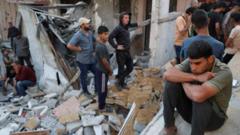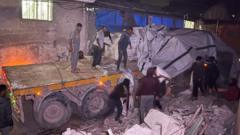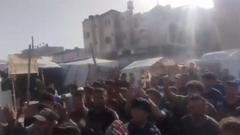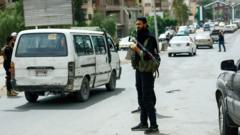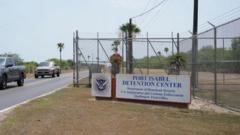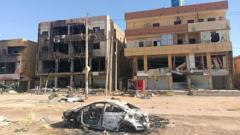The magnitude 7.7 earthquake has devastated Mandalay, resulting in collapsed buildings, fatalities, and a critical shortage of aid for the survivors. The military government's struggle with civil unrest complicates rescue efforts, leaving families like Nan Sin Hein’s in desperate waiting for news of missing loved ones while local communities rally to provide support.**
Despair in Mandalay: Earthquake Survivors Face Devastation and Neglect**
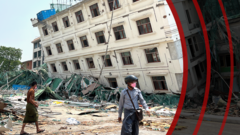
Despair in Mandalay: Earthquake Survivors Face Devastation and Neglect**
A recent earthquake in Mandalay, Myanmar, has left the city in ruins, as survivors grapple with a dire lack of assistance amid ongoing political turmoil.**
Driving through the streets of Mandalay, the effects of the recent earthquake become painfully visible, as destruction greets every turn. The northern and central districts show the worst damage, with collapsed structures littering the roads. Many buildings have cracks rendering them uninhabitable; the main hospital struggles to provide care outdoors due to the magnitude of the disaster.
Access for foreign journalists is highly restricted by Myanmar’s military government, which has declared a blockade on international media following the quake. Operating undercover, the BBC reports a grim scene of communities hungering for support amidst a paralyzed rescue operation.
Desperation is palpable among families like that of Nan Sin Hein, who has been anxiously waiting outside a collapsed five-storey building for five days, hoping for the safe recovery of her son, Sai Han Pha, who is trapped inside. The structural shift post-earthquake left the once-thriving building in a precarious state, likened to an angle poised for collapse at any moment.
Despite the military's appeal for international aid, complicated relations with numerous countries mostly result in limited response. Countries like India, China, and Russia have provided some assistance; however, efforts are similarly focused on specific locations housing substantial casualties, while much of Mandalay remains isolated from organized rescue operations.
Local disaster response teams face severe challenges in retrieving trapped individuals amidst the sweltering heat of nearly 40C. The arduous work is rendered even more harrowing by the deterioration of conditions, with recovering bodies proving to be an emotionally distressing task for both rescue workers and grieving families.
Signs of life are diminishing as recovery efforts stretch out. Parents, like those of 29-year-old U Thuzana, cling to hope amidst heart-wrenching uncertainty, while the loss becomes starkly evident. Many bodies are barely recognizable due to the severity of their injuries, leading to devastating moments of unclear identification.
Beyond individual tragedies, Mandalay’s historical and community spaces have also crumbled under the quake's force. Local sites, including the renowned Maha Muni Pagoda, have sustained damage, while makeshift burial sites now overwhelm the area.
With the military overstretched amid on-going civil conflict, regular operations continue alongside recovery. The aftermath yields scenes of displaced families seeking refuge in whatever available public space remains, haunted by aftershocks and the creeping terror of another disaster.
Community response has been inadequate, with volunteers and local groups distributing limited supplies. Long lines form as residents, deprived of basic necessities, compete for scarce food and resources. Those hurt within the quake find themselves expected to fend for loved ones without sufficient medical assistance; relatives emerge as defacto caregivers amidst extreme conditions.
Seated beneath trees as night falls, the weary faces of displaced individuals like 72-year-old Daw Khin Saw Myint encapsulate the heartache wrought by loss and uncertainty. Many have lost their homes and, with it, their sense of safety and security.
As days pass without resolution, those waiting on information about lost loved ones, like Nan Sin Hein, can only hope for the worst outcome – closure and the opportunity to say goodbye. “I want to see him,” she pleads through tears, embodying the shared sorrow that now paints the city of Mandalay.

